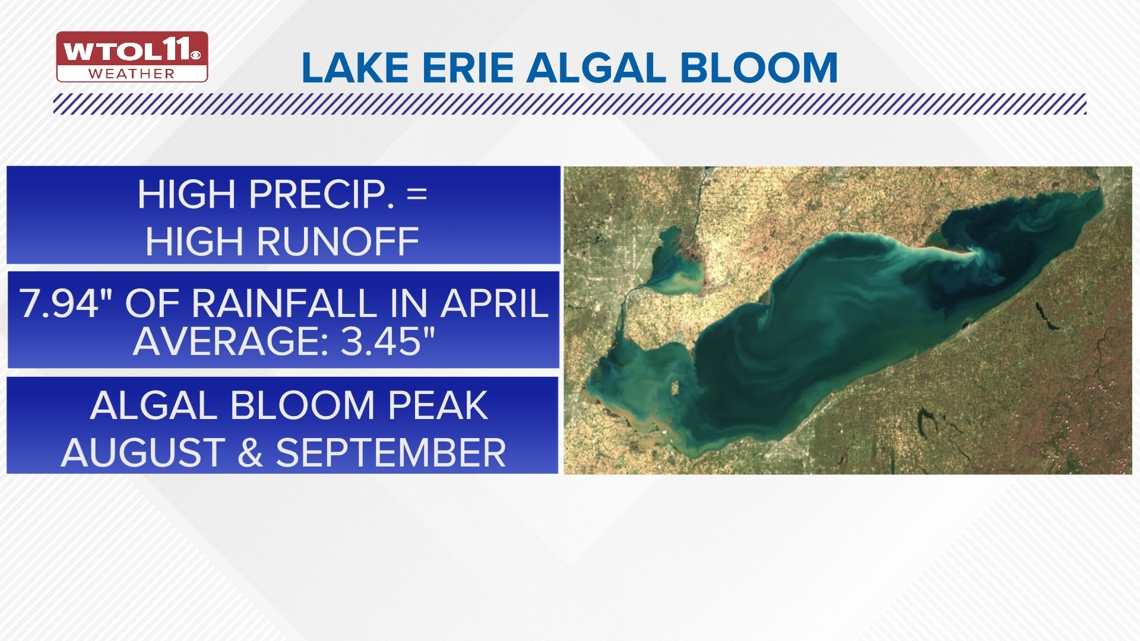TOLEDO, Ohio — As the summer approaches, the Great Lakes stand on the brink of another algal bloom season, a recurring menace that threatens the ecological balance of Lake Erie.
With memories of past blooms' devastating impacts still fresh, communities around the lake are gearing up for potential challenges that we could see with record rainfall this spring.
Researchers are hard at work collecting data and analyzing samples to better understand the dynamics of the algal bloom, and what to expect for this year’s outlook. This annual phenomenon, fueled by nutrient runoff and exacerbated by climate change, poses significant risks to aquatic ecosystems, drinking water supplies and local economies.
Harmful algal blooms have become the talk of the summer for nearly a decade, especially as the heat cranks up and we edge closer to the 10-year anniversary of the water crisis of 2014.
With record rainfall in the month of April, this summer is already shaping up to be an active year on the lake.


Lake Erie is known for its scenic beauty and vibrant ecosystems, is once again under scrutiny as experts warn of the impending algal bloom season. With the early predictions already at moderate to larger than moderate it raises questions on if we should be concerned.
Justin Chaffin, who is a Research Coordinator at the Stone Laboratory, said the record-breaking amount of rain we had in April is the difference maker.
"It is the main driver for the above-average algal bloom forecast," Chaffin said. "The large amount of rain carries the runoff that carries the nutrients of phosphorus and nitrogen, and then, when we get more phosphorus and nitrogen, we get a larger bloom."


As Lake Erie braces for another potential algal bloom, early predictions serve as a cautious reminder of the urgent need for concerted action to safeguard the lake's fragile ecosystem.

